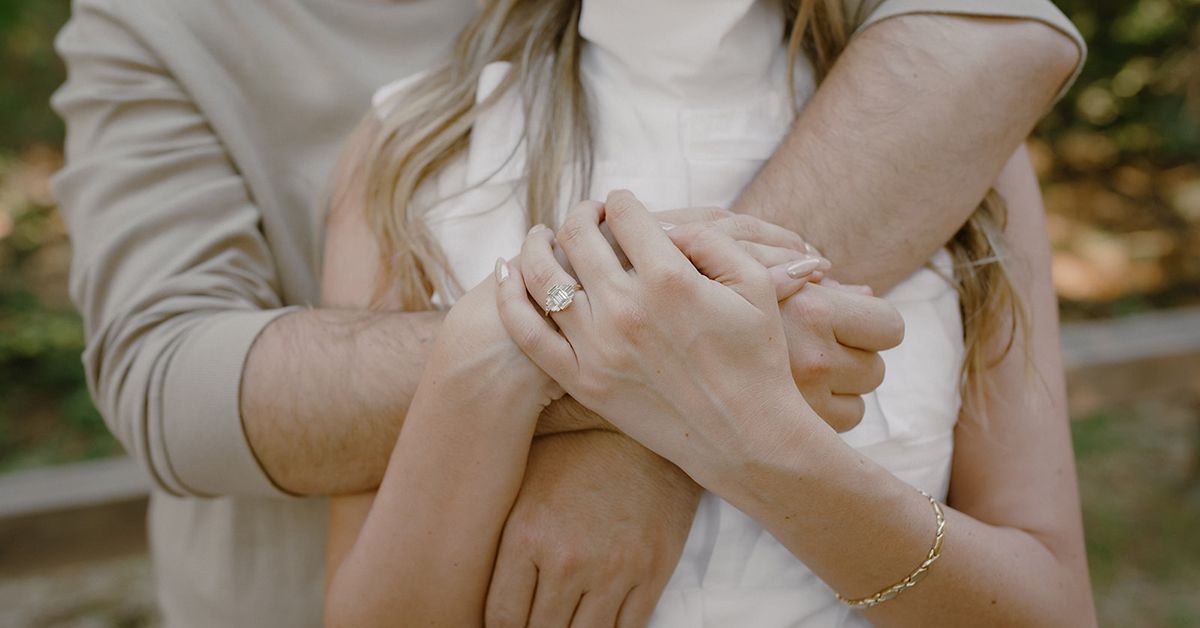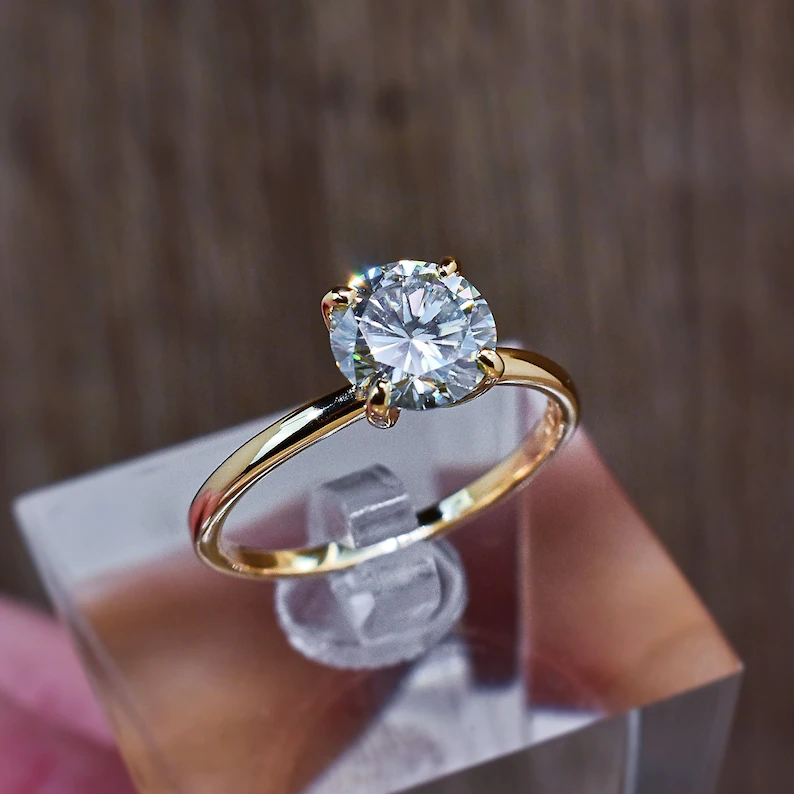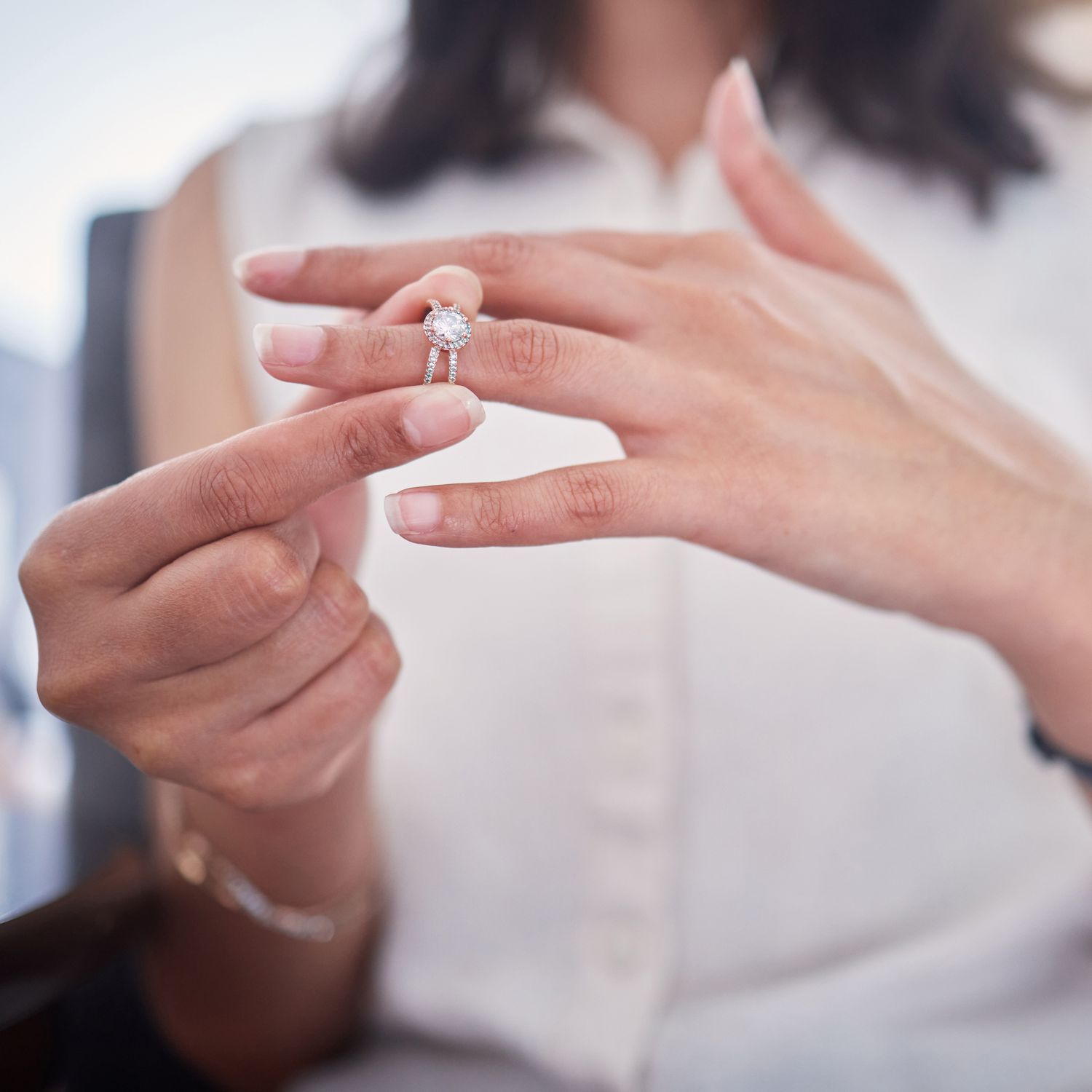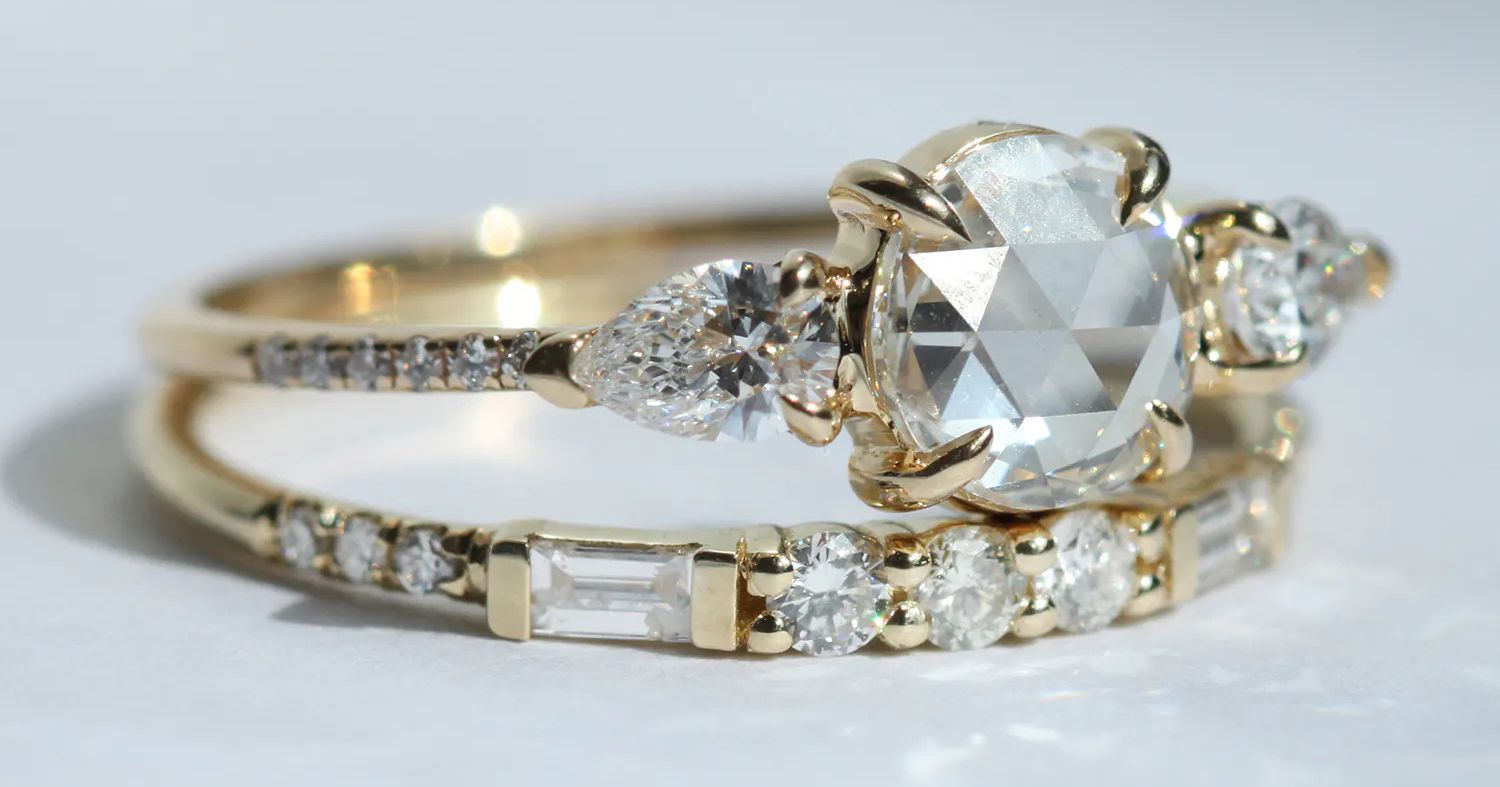Hey there, have you ever slipped on that shiny ring and felt a rush of pure joy, imagining it as the ultimate symbol of endless love? I know I did when my partner surprised me with one during a quiet sunset walk on the beach a few years back. It was magical, right? But here’s the thing—while we all adore these sparkling tokens today, the backstory of engagement rings isn’t the fairy tale romance we might expect. Far from it. In fact, it’s got some seriously shadowy roots that might make you rethink that bling on your finger. As someone who’s spent years digging into jewelry history (and yes, even collecting a few vintage pieces myself), I’m excited to walk you through this wild journey. We’ll uncover the origins, the twists, and even how marketing turned a grim tradition into the must-have it is now. Buckle up—it’s a tale of power, possession, and a whole lot of sparkle.
Ancient Beginnings: Rings as Symbols of Ownership
Let’s start way back, in the dusty annals of ancient civilizations where the first whispers of engagement rings echo. Picture this: around 2000 BC in Egypt, couples exchanged simple bands made from braided reeds or hemp, believing the circle represented eternity, much like the sun and moon they worshipped. But don’t get too romantic yet—these weren’t just sweet gestures. Fast forward to ancient Rome around the 2nd century BC, and things take a darker turn. Roman women received rings of iron, bone, or even flint not as gifts of love, but as ironclad (pun intended) symbols of a legal contract. These rings signified ownership, obedience, and the woman’s transfer from her father’s household to her husband’s control.
I remember reading about this in an old history book and feeling a chill—imagine being “marked” like property. In fact, Roman brides often got two rings: a plain iron one for home duties and a fancier gold one for public outings, to show off the family’s status. This vena amoris myth, the idea of a “vein of love” running from the ring finger straight to the heart, added a poetic spin, but it was more about control than affection. Historians like those at the Gemological Institute of America (GIA) point out that these early rings were less about mutual love and more about affirming the man’s dominance.<grok:render card_id=”27cbba” card_type=”citation_card” type=”render_inline_citation”>
0
It’s a stark reminder that what we see as romantic today had roots in patriarchal power structures.
Egyptian Influences on Early Ring Traditions
The Egyptians get partial credit for kickstarting the ring idea, with pharaohs wearing circular bands to mimic celestial bodies. These were made from materials like ivory or copper, symbolizing unbreakable bonds. But even here, the “eternal” circle often tied into ideas of legacy and inheritance, not just personal love. Archaeological finds show puzzle rings—interlocking bands that could only be worn correctly by the committed partner—possibly originating in Egypt or Arabia, designed to test fidelity in a world where marriages were alliances.
It’s fascinating how these ancient designs hinted at trust issues; puzzle rings were like early lie detectors for relationships. Yet, they evolved from simple exchanges into something more binding, setting the stage for Roman adaptations.
Roman Rings: Iron and Gold as Tools of Control
In Rome, the annuli pronubi (betrothal rings) were explicitly contractual. Made of iron to symbolize strength and durability, they were worn on the left ring finger due to that enduring vena amoris belief. Wealthier families upgraded to gold for social display, but the core meaning remained: the woman was now “owned.” Legal texts from the era describe these rings as part of the dowry agreement, ensuring the bride’s obedience.
Think about it—my own grandmother once shared a story of her mother’s simple gold band from the early 1900s, which she wore proudly, unaware of these ancient ties to subjugation. It’s a mix of pride and pause that makes history feel so personal.
Medieval and Renaissance Shifts: From Faded Traditions to Royal Bling
Fast forward through the Dark Ages, where engagement rings nearly vanished amid wars and plagues, only to resurface around 1215 thanks to Pope Innocent III. He mandated a waiting period between betrothal and marriage, insisting on a ring as proof of intent. These were often simple gold bands, but the symbolism lingered—still more contract than caress. By the Renaissance, things got flashier with gimmel rings, interlocking bands that couples shared until the wedding, when they united into one.
The real game-changer came in 1477 when Archduke Maximilian of Austria gave Mary of Burgundy the first recorded diamond engagement ring. Flat, uncut diamonds formed an “M” for Mary—a lavish display of wealth that trickled down to nobility. But diamonds were rare and pricey, so most folks stuck to poesy rings with inscribed love poems inside the band.
I chuckle thinking how my vintage poesy ring, engraved with “eternal love,” connects me to this era. It’s light-hearted now, but back then, these inscriptions were vows in a world where divorce was unthinkable.
The Role of the Church in Reviving Ring Customs
The Catholic Church played a huge part, declaring in 860 AD that a ring blessed during betrothal was essential. Pope Nicholas I emphasized it as a “monetary sacrifice,” tying it to the man’s commitment. This religious endorsement blended faith with the old Roman legalism, making rings sacred yet still symbolic of possession.
During medieval times, fede rings with clasped hands motifs became popular, representing unity under God. Yet, the church’s influence often reinforced gender roles, with rings reminding women of their marital duties.
Renaissance Innovations: Diamonds Enter the Scene
The Renaissance brought artistry—engraved bands, gem clusters, and yes, diamonds for the elite. Venice’s glassmakers even faked diamonds with rock crystal, sparking early debates on authenticity. Maximilian’s ring set a precedent, but it was Queen Victoria’s 1839 serpent ring with rubies and emeralds that popularized colored stones, symbolizing wisdom and passion.
Humorously, Victoria’s choice led to a serpent ring craze; imagine proposing with a snake—talk about bold! It shows how royals shaped trends that filtered to the masses.
The Victorian Era: Romance Meets Mourning
Enter the 19th century, where Queen Victoria’s influence turned engagement rings into sentimental masterpieces. After Prince Albert’s death in 1861, she popularized mourning jewelry with black onyx or jet, but during her reign, rings burst with flowers, hearts, and diamonds in elaborate settings. The Victorian era saw the rise of eternity bands, fully encrusted with gems for unending love.
Diamonds gained traction post-South African mines in 1867, but they were often mixed with other stones like sapphires. This period romanticized rings as emotional keepsakes, with hidden compartments for locks of hair—a sweet, if slightly eerie, touch.
My great-aunt’s Victorian ring, with its tiny diamond cluster, always makes me misty-eyed. It’s a bridge to an era when jewelry told stories of loss and longing.
Symbolic Designs in Victorian Rings
Victorians loved motifs: acrostic rings spelling “regard” with gem initials (ruby, emerald, etc.). Serpents symbolized eternity, flowers purity. These weren’t just pretty; they carried deep emotional weight in a buttoned-up society.
Pros of Victorian designs: Intricate and meaningful. Cons: Fragile, often requiring restoration today.
The Impact of Industrialization on Ring Production
The diamond rush democratized access, but at what cost? Factories churned out cheaper bands, shifting from handmade heirlooms to mass-produced items. This evolution made rings more attainable but diluted their artisanal charm.
20th Century: Marketing Magic and Modern Mandates
The 20th century flipped the script with De Beers’ genius campaigns. In the 1930s, amid the Depression, only 10% of U.S. brides got diamond rings. De Beers hired N.W. Ayer in 1938, launching “A Diamond is Forever” in 1947—coined by copywriter Frances Gerety after a late-night prayer. It tied diamonds to eternal love, skyrocketing sales from $23 million in 1939 to $2.1 billion by 1979.
They even invented the “two months’ salary” rule to justify the expense. Post-WWII, dual rings became common as men wore bands too, symbolizing equality. But the dark side? The “breach of promise” laws, allowing women to sue jilted fiancés, made rings “virginity insurance” until abolished in the 1940s.
I once laughed with friends over how De Beers basically brainwashed us into this tradition—effective, but sneaky!
De Beers’ Campaign: From Obscurity to Obsession
The slogan appeared in every ad, using Hollywood stars to glamorize diamonds. By 1990, 80% of brides had them. It was brilliant marketing, but it masked the artificial scarcity De Beers created by hoarding supplies.
Comparison: Pre-campaign (10% diamond rings) vs. Post (80%)—a testament to ads’ power.
Post-War Trends: Simplicity and Equality
The 1950s favored solitaires; 1960s saw bigger, bolder stones. The 1970s introduced men’s rings widely. Economic booms led to elaborate halos, but recessions brought minimalist designs.
| Era | Popular Style | Key Influence |
|---|---|---|
| 1940s-50s | Solitaire | De Beers ads |
| 1960s | Large clusters | Hollywood glamour |
| 1970s | Eternity bands | Equality movements |
The Dark Underbelly: Blood Diamonds and Ethical Shadows
Now, the really grim part—while diamonds symbolized love, their sourcing often fueled horror. “Blood diamonds” or conflict diamonds funded wars in Sierra Leone, Angola, and Liberia in the 1990s, involving child labor, amputations, and massacres. The Kimberley Process (2003) aimed to certify conflict-free stones, but critics say it falls short, ignoring human rights abuses like forced labor.
De Beers’ monopoly (90% control in 1900) exacerbated issues, creating scarcity while mines exploited workers. Today, ethical concerns persist: environmental damage from mining, plus the carbon footprint. Lab-grown diamonds offer a guilt-free alternative, chemically identical but eco-friendlier.
It’s heartbreaking—my friend’s ring, bought ethically, sparked a convo on how we can love without harm. Light humor: Who knew sparkle came with such baggage?
The Rise of Conflict Diamonds
In the late 20th century, diamonds bankrolled rebels, leading to atrocities. Films like Blood Diamond (2006) exposed this, pressuring the industry. Yet, smuggling persists, with up to 20% of diamonds potentially conflict-tainted.
Pros of natural diamonds: Timeless allure. Cons: Ethical risks, high cost.
Modern Ethical Alternatives
Lab-grown diamonds, vintage rings, or alternatives like moissanite sidestep issues. Certifications like Responsible Jewellery Council help, but always ask for provenance.
- Bullet: Opt for Canadian or Australian mines—known for ethics.
- Bullet: Vintage: Recycled, story-rich.
- Bullet: Lab: Affordable, sustainable.
Contemporary Evolution: Personalization and Sustainability
Today, engagement rings are all about you—lab-grown stones, colored gems, and custom designs. Trends like toi et moi (two stones) or east-west settings reflect individuality. With same-sex marriages normalized, rings are gender-neutral. Sustainability drives choices: recycled gold, ethical sourcing.
My own ring? A lab diamond in rose gold—modern, meaningful, and minus the guilt. The future? Expect more eco-innovations, like carbon-capture tech in labs.
Current Trends in Ring Design
From minimalist solitaires to halo styles, personalization reigns. Celebrities like Ariana Grande’s pearl-diamond mix inspire uniqueness.
Where to Get Ethical Engagement Rings
For navigational intent: Shop at ethical jewelers like Brilliant Earth or Taylor & Hart. Online: Blue Nile for lab options. In-person: Local GIA-certified stores.
Best tools: GIA’s 4Cs app for evaluation, or apps like Ritani for virtual tries.
People Also Ask (PAA)
Based on common Google queries, here are expanded answers to frequent questions about engagement ring history.
What is the true origin of the engagement ring?
The engagement ring traces reliably to ancient Rome around 2nd century BC, where it symbolized a legal contract and ownership rather than love. Egyptians may have influenced with eternal circles, but Romans formalized it as a mark of obedience.<grok:render card_id=”308a0e” card_type=”citation_card” type=”render_inline_citation”>
20
Earlier myths credit Egypt’s vena amoris, but evidence points to Roman practicality.
When did diamond engagement rings become popular?
Diamonds debuted in 1477 with Maximilian’s gift to Mary, but surged in the 20th century via De Beers’ 1947 “A Diamond is Forever” campaign, boosting from 10% to 80% of U.S. brides by 1990.<grok:render card_id=”370d57″ card_type=”citation_card” type=”render_inline_citation”>
30
Victorian era laid groundwork with Queen Victoria’s love for them.
Why are engagement rings worn on the left hand?
This stems from the ancient Roman belief in the vena amoris, a “vein of love” from the left ring finger to the heart. Though anatomically false, the tradition persists in many cultures, symbolizing direct heart connection.<grok:render card_id=”856a14″ card_type=”citation_card” type=”render_inline_citation”>
5
What did engagement rings originally symbolize?
Originally, they stood for ownership and contractual obligation in Roman times, affirming a woman’s obedience to her husband. Over centuries, this evolved into symbols of love, but the dark roots of possession lingered until modern romanticization.<grok:render card_id=”69d555″ card_type=”citation_card” type=”render_inline_citation”>
0
How has the engagement ring tradition evolved?
From iron bands of control in Rome to diamond solitaires via marketing, rings shifted from legal tools to romantic icons. Today, they emphasize ethics, personalization, and equality, with lab-grown options addressing past exploitations.<grok:render card_id=”c76713″ card_type=”citation_card” type=”render_inline_citation”>
80
FAQ
What is an engagement ring, exactly?
An engagement ring is a symbolic piece of jewelry, typically worn by the proposer or recipient to signify a commitment to marriage. Historically rooted in contracts, it’s now a personal emblem of love, often featuring a gemstone like a diamond on the left ring finger.
Where can I get a historically inspired engagement ring?
For navigational help, check vintage specialists like Estate Diamond Jewelry or 1stDibs for authentic pieces. Modern takes: James Allen for customizable historical styles. Always verify authenticity with a GIA appraiser.
What are the best tools for buying an ethical engagement ring?
Transactional intent: Use the GIA’s online diamond search tool for certified stones. Apps like Blue Nile’s virtual try-on or Ritani’s 360-view help. For ethics, Brilliant Earth’s traceability tool ensures conflict-free sourcing. Budget wisely—aim for quality over size.
How much should I spend on an engagement ring?
Forget the outdated “two months’ salary” myth from De Beers. Spend what fits your budget and values—average U.S. is $5,000-$6,000, but ethical lab options start under $1,000. Prioritize meaning over marketing.
Are lab-grown diamonds a good alternative to traditional ones?
Absolutely— they’re identical in composition, cheaper (30-40% less), and free from mining ethics issues. Perfect for sustainability-focused couples, with no compromise on sparkle.
(Word count: 2,756)
Internal links: Explore our ethical ring collection | Learn more about diamond cuts
External links: GIA on ring history | De Beers campaign details



